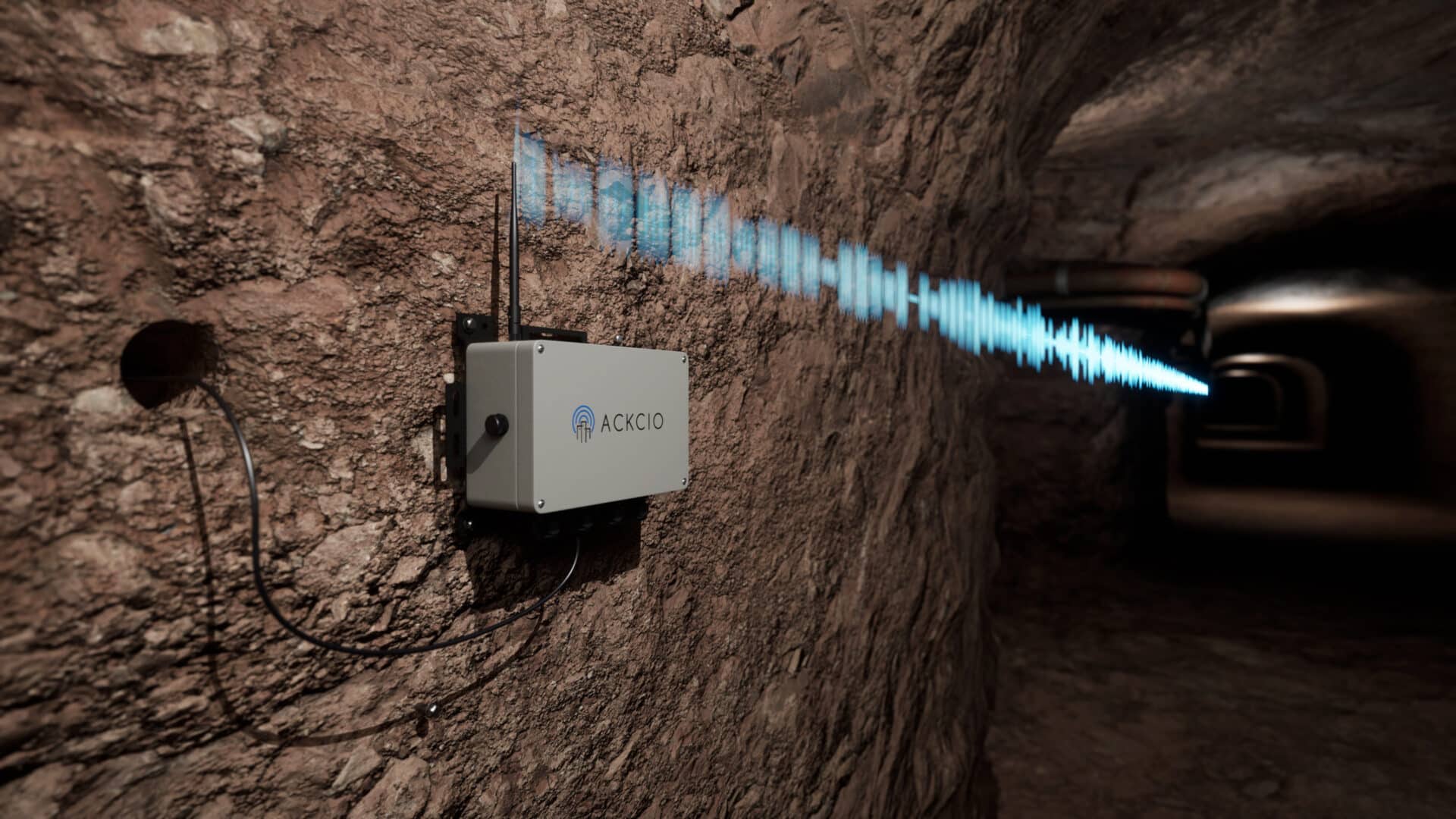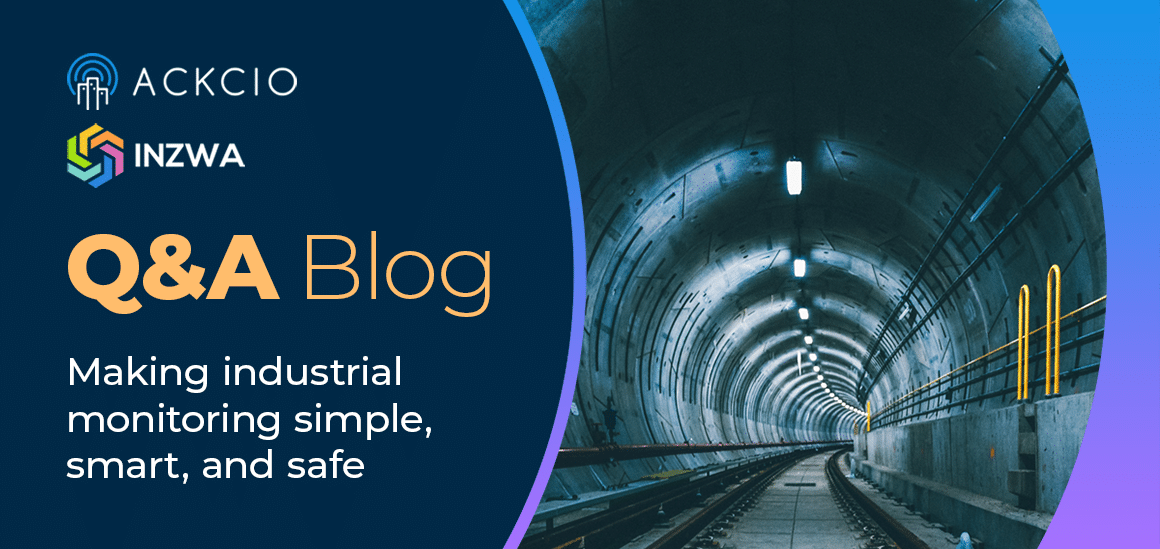Your Questions Answered: “Driving the Best Results From Data Acquisition to Data Visualisation and Management” Webinar

Learn how Ackcio and Vista Data Vision’s integration helps you enhance safety, manage risks, and increase efficiency.
In October, Ackcio and Vista Data Vision announced an integration between their flagship solutions, giving users the power of Ackcio’s automated, wireless monitoring solution and the management and analytics platform of Vista Data Vision, all in real-time.
In a joint webinar on Dec. 7, 2021, the two companies explained how to drive the best results from data acquisition through to data visualisation and management. Here’s a recap of the highlights from the session. To watch the full webinar, click here.
1. How can remote monitoring benefit my project?
We kicked off with a brief history of monitoring technology. Mobashir Mohammad, Ackcio’s Co-Founder and Chief Technology Officer, reviewed the 100-year evolution from basic manual techniques in the early 1900s to automated dataloggers in the 1970s and wireless technologies in the 1990s. He outlined where we are today, with IoT and cloud technologies, and where we’re heading with AI and machine learning.
These digital technologies are transforming many traditional industries, including construction, infrastructure, mining and rail, which are seeing the benefits of real-time monitoring: preventing disasters by empowering project owners with proactive maintenance, increasing safety by eliminating the need for on-site data collection, cutting workforce costs, and more.
“It can tremendously improve our efficiency because now we can take much more frequent data to have deeper insights into what is happening on the site,” Mobashir said. “With all the recent advancements, we have pure control on data integrity and security.”
And yet, many projects still rely on outdated manual or cabled systems that are expensive and don’t offer the data quality or frequency of IoT solutions.
2. How does Ackcio Beam work? How is it unique?
Mobashir introduced the Ackcio Beam, the company’s flagship technology. This solution consists of wireless data loggers and gateway devices that overcome many of the traditional challenges of wireless communications, particularly in very harsh environments such as mines.
On the hardware side, Ackcio’s industrial-grade system is built to withstand extreme conditions and temperatures ranging from -40 to 80 degrees Celsius. But what really sets it apart is its unique communications features, including a self-healing, multi-hop communications protocol.
“If there is an obstruction, there is always an alternate route that these devices can find to deliver the data reliably to the gateway,” Mobashir said. “And all of that happens automatically.”
Ackcio also has a channel-hopping feature to mitigate against the risk of data loss by interference. In the case of a busy frequency, the system automatically switches to a less congested one to always keep the data flowing.
With on-demand downlink, users can remotely re-configure devices to adjust reading frequency, while advanced encryption ensures data security.
3. What sensors are Ackcio and Vista Data Vision compatible with?
Ackcio and Vista Data Vision are compatible with all leading geotechnical, structural, and environmental sensors types, including analogue, vibrating wire and digital sensors such as in-place inclinometers, digital tiltmeters, borehole extensometers, water level sensors, ShapeArrays and more.
“We support all sorts of sensors from all sorts of brands, and our integrations team is steadily working to integrate more,” said Steve Pollett, Ackcio’s Customer Success Manager, Americas.
This open integration makes for seamless deployment and reliable, real-time data collection from a variety of sensors to efficiently manage risk and increase productivity.
Steve shared the example of the Kalgoorlie Gold Processing Facility in Australia, a very remote site covering a vast land area that would be very difficult to monitor using manual or wired monitoring. The site’s tailings dam is monitored using piezometers and in-place inclinometers.
“By using Ackcio Beam, our client was able to obtain regular, real-time readings from a robust and reliable wireless network system,” Steve said. “In turn, this led to an increased awareness of the dam’s stability and alleviated the high labour costs of manual monitoring for a large geographical area.”
4. What is the Vista Data Vision software data management platform?
Andres Andresson, Director, Business Development, Bentley Systems, introduced Vista Data Vision, the industry-leading platform for instrumentation monitoring.
“We specialize in software to manage, visualise and monitor any instrumentation data,” he said. “Our goal has always been to create a single solution that our users can have to integrate any instrument data. It doesn’t matter if it is automatically collected, manually collected, or from different vendors; it can all fit inside Vista Data Vision. For the past 20 years, that vision has been sold worldwide.”
Now in over 70 countries, Vista Data Vision works with engineering companies, system integrators, project owners and government agencies in geotechnical and structural projects, including mines and dams, as well as environmental monitoring.
“What connects all of our users, whether they are collecting data from one sensor or thousands, is that they need to have a reliable and robust platform to view, manage and monitor all of their data,” Andres said.
Along with its flagship platform, Vista Data Vision offers custom development, so users are totally in control of how they view and manage their data.
Andres described how quick and easy the platform is to deploy.
“We are talking days, not weeks or months,” he said.
Once installed, it’s simple to scale.
“If you start with one sensor today, you might have 1,000 or even 10,000 sensors after two years. Whatever number you might have, Vista Data Vision can work with it.”

5. How do I integrate Ackcio Beam with the Vista Data Vision platform?
Andres provided a demonstration showing how easy it is for a user to connect an Ackcio Gateway to a Vista Data Vision platform. Using a simple, secure token system, it only takes a few clicks to make the configuration. Within minutes, the Gateway starts pushing the data from all of its connected nodes in the field to the Vista Data Vision system.
Users can see information for each node, including temperature and battery life. Andres showed how easy it is to add equations to convert raw data into engineering units, and to create custom, real-time display dashboards. There, users can view the data in a variety of formats, including text, images and graphs, and integrate it with aerial images, GIS mapping, and more.
6. What happens if my Gateway loses connection? Will the missing data be pushed to Vista Data Vision?
Absolutely. In the case of a network disruption, your gateway would continue to store the data on its onboard memory until the connection is restored, at which point it would transmit all the data to your server. Click here to read more about Ackcio’s multiple layers of data loss protection.
7. How secure is the communication between Ackcio Gateway and Vista Data Vision?
Very. Ackcio and Vista Data Vision provide an end-to-end, encrypted communications channel. Along with Ackcio’s robust security features protecting your data from Node to Gateway (click here to read more), the Gateway pushes data to the Vista Data Vision platform using HTTPS, a secure communication protocol. Ackcio releases data to Vista Data Vision based on token-based authentication. Anyone in the middle would not have access to the raw data, which can only be decrypted at release.
8. Can Vista Data Vision be installed on-premise?
Yes. Typically Vista Data Vision is installed on-premise on a server running on the user’s network. Data can automatically be pushed to the system from the Ackcio beam. Vista Data Vision also supports data that is manually collected or automatically collected from all major datalogger manufacturers.

9. Is the integration push-based or pull-based? What is the latency?
The integration is push-based, significantly reducing end-to-end latency. The Ackcio Gateway pushes the data in near real-time to the cloud, with a delay of mere seconds. Ethernet or 4G connectivity adds very minimal latency compared to a pull-based mechanism that requires users to set a schedule for data collection.
10. Does Vista Data Vision support manual data collection?
Yes, the Vista Data Vision platform supports both automatically and manually collected data. This hybridity is especially useful in projects that rely on both sensor types or that are transitioning from manual to automated data collection.
11. Can I set alarms?
Yes, the Vista Data Vision platform supports high-end and low-end alarms. They are easy for users to set. Multiple thresholds can be set for each sensor.
12. How is Vista Data Vision priced? Is there a plan for small projects?
Yes, Vista Data Vision offers tiered pricing based on data amounts. The pricing fits projects of all sizes ranging from a few to thousands of sensors.
Reach out to [email protected] for more information.
13. What’s the duration of the battery on a vibrating wire logger?
For details on Ackcio’s logger battery life for a variety of sensor types, click here.





